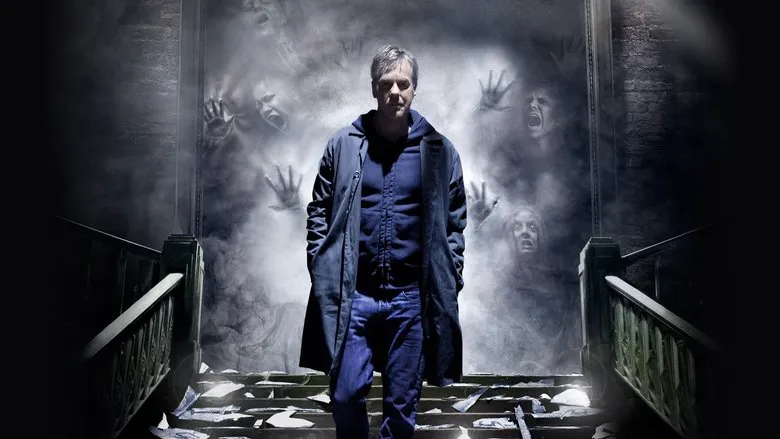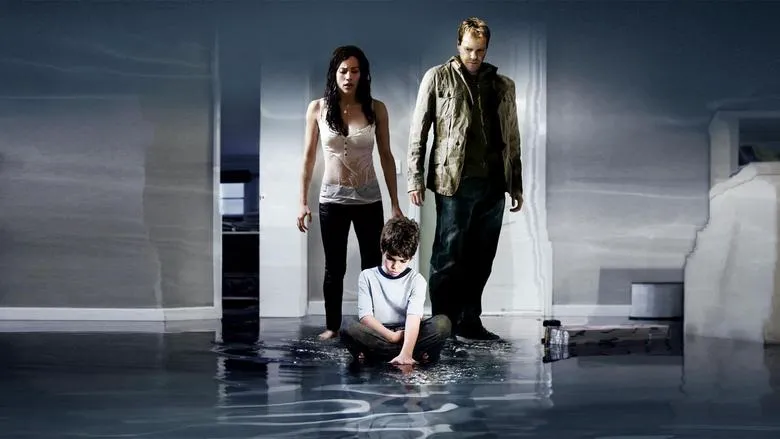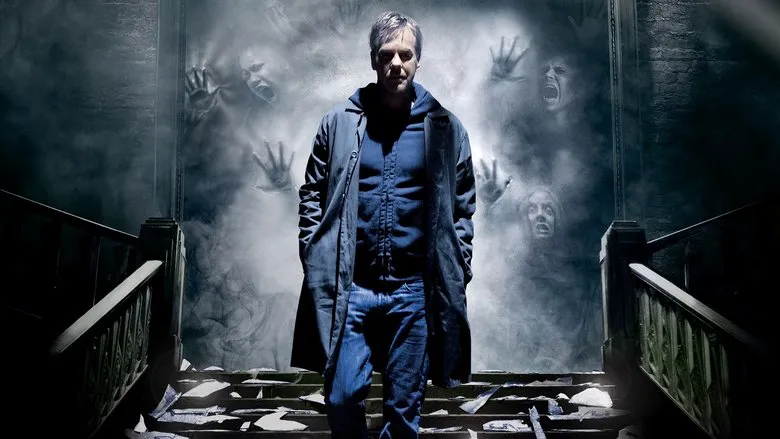Mirrors: A Reflection of Horror Excess

In his remake of the 2003 Korean horror film, Alexandre Aja, the director of “The Hills Have Eyes” (2006), gleefully recreates the original’s opening scene: a man standing before a mirror has his throat slashed by his own reflection. However, where the Korean version delicately depicts a thin red line appearing on the victim’s neck, Aja unapologetically showcases a gaping trachea, ensuring viewers know what they’re in for and promptly forget the source material.
Ben Carson (Kiefer Sutherland) takes a job as a night watchman at a gutted and abandoned department store. He soon notices that the store’s mirrors are behaving strangely: covered in persistent handprints (as if someone were smearing them from the inside!) and reflecting gruesome images disconnected from reality. One day, his sister, with whom Carson is temporarily staying after a falling out with his wife, is attacked by a bathroom mirror that rips her jaw off. Discovering the blood-soaked bathroom, Carson realizes he must protect his wife and children and that the mirrors want something from him.

After surviving the bathroom scene, one might be tempted to flee, fearing further explorations of human anatomy. What follows is supposed to be suspenseful, but falls short.
Lost in Translation: From Korean Mystique to Romanian Dread
“Mirrors” (2008) ultimately reveals itself as a display of the director’s overabundance of influences. Ostensibly based on Korean mysticism, the film quickly veers into a bloody spectacle. The grandeur of the unfinished Academy of Sciences in Bucharest, where the burnt-out supermarket was filmed, evokes almost lyrical memories of Catherine Zeta-Jones, clad in a negligee, fleeing a ghost in “The Haunting.” Carson then discovers that the spirits haunting the store originated from a nearby mental asylum. It’s hard to blame him for the choice; the options were limited: an old Native American burial ground, a bloodthirsty torturer, or a mental asylum. Later, “Mirrors” morphs into “The Exorcist” – whether the original or one of its many parodies is unclear. A bit of pyrotechnics at the end, and the hero finds himself in the finale of “Silent Hill” (2006), with no escape until a sequel is made.

The Real Monster: A Building Steeped in History
Aside from numerous illogical and unpleasant moments, Aja peppers his ultimately engaging film with elements ripe for a successful trailer: a pigeon taking flight with the roar of a jet fighter, a treacherous reflection lurking behind a chair with a knife. All this would have been just another failed attempt to transplant Asian nightmares into the peaceful dreams of a Western audience were it not for the aforementioned Romanian Academy of Sciences building. If there is a monster in the film, it is this building. The grim creation of Nicolae Ceaușescu, the communist dictator of Romania, who held titles such as “Danube of Reason” and “Tender Kiss of the Motherland” and was executed by a rebellious people along with his wife Elena, could indeed serve as a haven for all kinds of evil.
It’s strange, though – having such horror at your doorstep, to try to import nightmares from Korea. The peculiarities of globalization, perhaps.